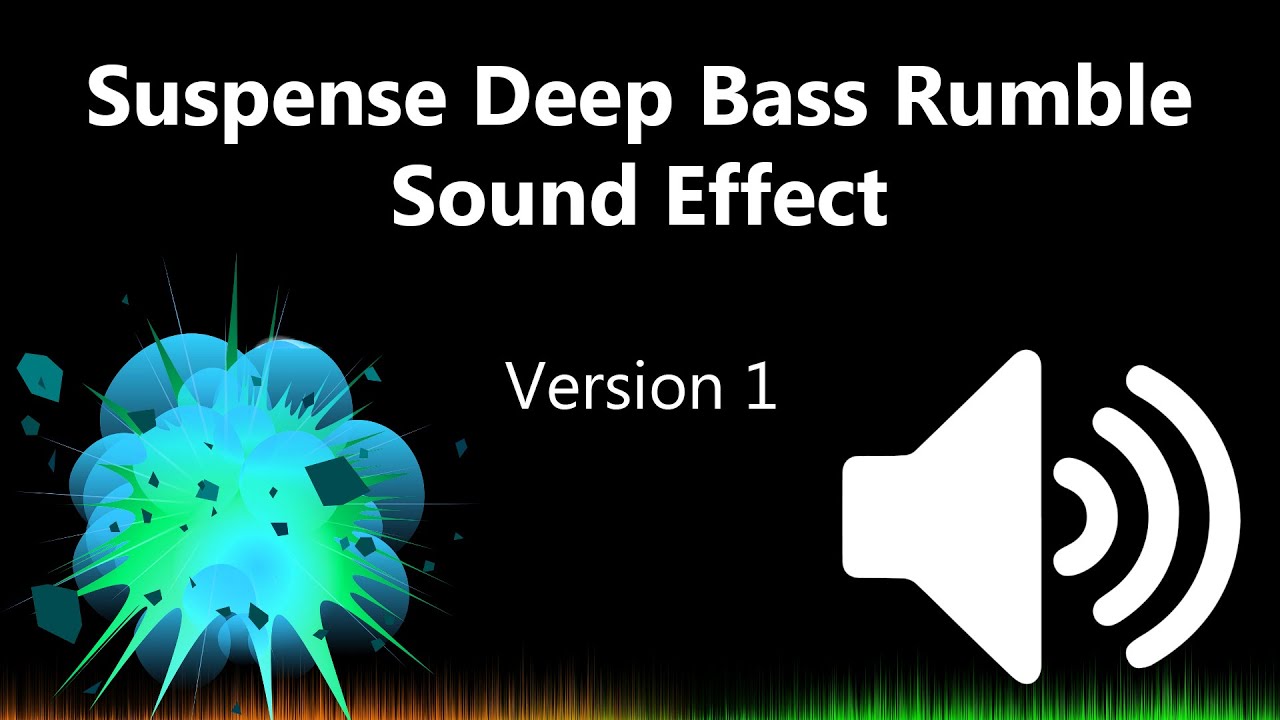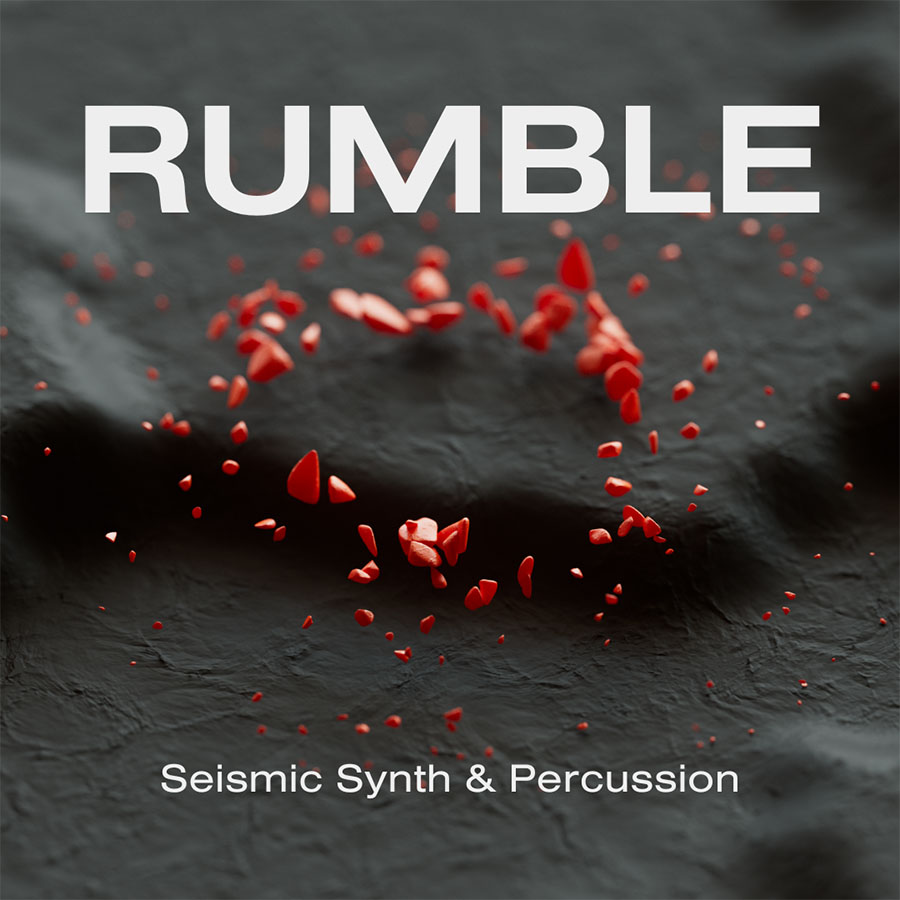Have you ever found yourself lost in a game, surrounded by the immersive sounds that elevate your experience? That’s where Rumble comes in! Rumble is not just another platform; it’s a creator-driven space that emphasizes interactivity and authenticity. One of its standout features is its diverse sound effects—ranging from whimsical to spine-chilling—that enhance gameplay and storytelling. In this blog post, we’ll dig deeper into
The Importance of Sound Effects in Gaming

When we dive into the gaming world, it’s easy to get swept away by stunning graphics and intricate storylines. But let’s not forget the unsung heroes of the gaming universe—sound effects. They are crucial for creating an immersive environment, triggering emotional responses, and aiding gameplay mechanics. Here’s why sound effects matter:
- immersion: Sound effects help players feel like they are truly part of the game. Every rustle of leaves, the roar of an engine, or the crunch of footsteps creates a three-dimensional space that enchants players. Rumble captures this perfectly with sounds that match the game’s pace and atmosphere.
- Emotional Response: Think about the eerie silence before a jump scare in a horror game or the triumphant music accompanying a victory. Rumble’s sound effects work in sync with visuals to evoke emotions. They can heighten anxiety, joy, or sorrow, adding depth to the gaming journey.
- Gameplay Mechanics: Sound effects are not just for flair; they serve practical purposes too. For example, the sound of a weapon reloading or footsteps in the distance can alert players to potential threats or opportunities. On Rumble, sound effects provide essential cues that enhance strategic gameplay.
- World Building: A game’s universe is best experienced through sound. Engaging audio elements can transport players to fascinating realms, like the bustling streets of a cyberpunk city or the serene landscapes of a fantasy world. Rumble excels in crafting unique soundscapes that are integral to world-building.
In short, the role of sound effects in gaming is indispensable. They create a cohesive—a tapestry weaving together gameplay, visuals, and narrative. Rumble’s commitment to delivering high-quality, tailored sound effects not only augments the joy of gaming but also solidifies its position as a unique platform for creators. So, the next time you fire up a game, pay attention to the sounds. You might just discover a new layer of appreciation for the craft.
Also Read This: How to Invite Friends in My Hero Ultra Rumble and Play Together
3. How Rumble Creates Immersive Audio Experiences

When it comes to gaming, audio is just as crucial as the visual elements. Rumble, with its innovative approach to sound design, excels in crafting immersive audio experiences that pull players deeper into their virtual worlds. But how exactly do they achieve this? Let’s dive into the intricacies of their sound engineering techniques.
Firstly, Rumble employs 3D audio technology. This isn't just your average stereo sound; 3D audio creates a spatial sound environment where sounds come from all around you. Whether it’s the rustling of leaves or the distant echo of footsteps, Rumble’s audio makes you feel as if you're inside the game. Players often report a heightened sense of awareness, which can turn the tide in a fast-paced game scenario.
Another aspect is adaptive soundscapes. Rumble designs its soundtracks to change dynamically based on player actions or game context. For instance, if a player enters a tense scene, the music might ramp up in intensity, accompanied by sounds that create a sense of urgency. This approach not only enhances the storytelling but also keeps players engaged and on their toes.
Foley artistry is another secret weapon in Rumble's audio toolkit. By recording real-world sounds to match specific actions in the game, they create a more authentic auditory experience. Imagine the crunch of footsteps on gravel or the subtle rustle of clothing as a character sneaks through a shadowy corridor. These carefully crafted sounds can make players feel a part of the world, rather than just an observer.
Let’s not forget about the impact of emotional sound design. Rumble understands that sound can evoke emotions and set the tone of a scene. A soft, melancholic score can heighten feelings of loss, while an intense, pulsating soundtrack can raise adrenaline levels. By aligning the audio with the emotional core of a game, Rumble successfully resonates with players, making their experiences more impactful.
In conclusion, Rumble’s commitment to creating immersive audio experiences through innovative techniques ensures that each gaming session isn't just played—it's felt. With 3D audio, adaptive soundscapes, meticulous Foley artistry, and emotional sound design, Rumble transforms audio from a mere accessory into a central element of the gaming experience.
Also Read This: Does Annie Fight in the Rumbling? A Look at Annie’s Role in Attack on Titan’s Rumbling Arc
4. A Breakdown of Popular Sound Effects Used in Rumble

Sound effects can make or break a gaming experience, and Rumble nails it with a diverse array of sounds that enhance immersion and engagement. Let’s break down some of the most popular sound effects used in Rumble and how they contribute to the overall gaming experience.
- Weapon Sounds: Each weapon in Rumble games comes with its unique sound signature. From the crack of a sniper rifle to the satisfying "thud" of a melee weapon, these sounds amplify the excitement of combat and give players audio feedback that enhances their gameplay.
- Environmental Sounds: The world of Rumble is alive with sound. Think chirping birds, rustling leaves, and distant thunder. These ambient sounds not only provide context but also help players gauge their surroundings, adding to the realism.
- Action Sounds: Whether it's the splash of a character jumping into water or the explosion of a grenade, action sounds are impactful. They convey energy and urgency, making the game feel dynamic.
- UI Sounds: Subtle yet essential, the sound effects for user interface interactions—like confirming a selection or receiving a notification—can significantly enhance user experience. A satisfying "ding" or "pop" makes interactions more gratifying.
- Character Voices: Voice acting contributes layers to character development, but it’s the sound effects accompanying movements or actions that define personality. A character’s battle cry or a quick quip can make them memorable.
Rumble does not shy away from using classic sound effects, either. Many players find nostalgia in the familiar sounds reminiscent of their favorite childhood games. However, Rumble adds its modern twist to these sounds, ensuring they feel fresh and relevant in today’s gaming landscape.
Sound effects are not just arbitrary noises; they play a crucial role in the gameplay experience. By carefully selecting, designing, and implementing these sounds, Rumble enhances player immersion and keeps the excitement alive. The next time you step into a Rumble game, pay attention to the soundscape—it’s more than just background noise; it’s a carefully crafted audio experience designed to elevate your gameplay.
Also Read This: Can I Get Rumble on Roku? Easy Steps to Stream Rumble on Roku Devices
5. The Role of Sound Effects in Enhancing Player Engagement
When it comes to gaming, sound is an unsung hero that often gets overlooked. Many players don’t realize just how crucial sound effects are in building an engaging experience. Let's take a closer look at how sound effects play a pivotal role in enhancing player engagement, particularly in Rumble.
Immersion is Key! One of the primary functions of sound effects is to immerse players in the game world. Consider how a satisfying sound cue can make a simple action feel monumental. Whether it’s the sound of a sword clashing in combat or the subtle rustle of leaves in a serene environment, these audio elements create a rich backdrop that pulls players deeper into the experience.
Rumble leverages this by incorporating high-quality sound effects that resonate with the gameplay. The unique sounds tied to actions—like collecting power-ups, scoring points, or interacting with the environment—serve to reinforce player feedback. When players can hear the results of their actions, they feel a greater sense of accomplishment and connection to the game.
- Feedback Loops: Sound effects provide immediate feedback. Players know they’ve executed an action correctly when they hear the right sound. For example, the gratifying ding of a score earned reinforces positive behavior, encouraging players to keep engaging with the game.
- Emotional Responses: A well-timed sound can trigger an emotional response. Think of the suspenseful music and sound effects during a critical moment—they can elevate anxiety and excitement, making players more invested in the outcome. Rumble utilizes tension-building soundscapes effectively, gripping players during crucial gameplay moments.
- Building Atmosphere: Sound effects help in crafting the atmosphere of a game. From epic battles to serene landscapes, the right audio elements complement the visuals beautifully, enhancing the overall gaming experience.
Ultimately, Rumble enhances player engagement through intentional sound design that keeps players hooked. By connecting actions, emotions, and environments through sound, players find themselves returning to the game time and time again. And that, at the end of the day, is what every game developer hopes to achieve: a loyal, engaged player base.
Also Read This: Where to Watch Ready to Rumble? Viewing Options and More
6. Comparing Rumble's Sound Effects to Other Platforms
As gamers explore different platforms, one common question arises: how do the sound effects stack up? Rumble has cultivated a unique auditory experience, but how does it compare to other gaming platforms?
First off, let’s look at quality. Rumble's sound effects are crafted with attention to detail. They often deliver a richer sound experience than many competing platforms. Unlike some games that rely on generic sound libraries, Rumble uses custom-designed sounds, making for a more unique and immersive experience. This commitment to quality is something that players notice right away.
| Feature | Rumble | Competitor A | Competitor B |
|---|---|---|---|
| Sound Quality | High-definition custom sounds | Standard sound library | Mixed quality (some custom sounds) |
| Variety of Sounds | Extensive range | Limited variety | Moderate variety |
| Lag-free Audio | Minimal latency | Occasional lag | Some lag issues |
| Integration with Gameplay | Seamless | Inconsistent | Variable |
Another aspect to consider is the integration of sound effects with gameplay. Rumble excels here, as its sound design is closely tied to player actions. Each sound cue corresponds directly to a game mechanic, creating an intuitive experience. In contrast, some other platforms may employ sounds that feel like an afterthought or don’t align well with the gameplay.
Furthermore, Rumble focuses on creating an inviting environment. While some platforms might overwhelm players with sound—a barrage of effects that can detract from the experience—Rumble finds a balance. The sounds are harmonious and enhance rather than overclutter the gameplay.
In conclusion, while many platforms offer sound effects, Rumble's thoughtful approach and commitment to quality set it apart. Players looking for an immersive auditory experience will find Rumble's sound design both engaging and satisfying, making it a standout in the world of gaming. Whether you’re smashing through levels or navigating challenges, the sound effects in Rumble undoubtedly amplify your adventure. So next time you play, pay close attention to those sounds—they’re more than just noise; they’re a core part of the gaming journey!
Also Read This: What Episode Did Eren Start the Rumbling? Pinpointing the Turning Point in Attack on Titan
7. Future Trends in Sound Design for Rumble
As we dive deeper into the world of sound effects, it's fascinating to consider the future trends that are emerging for platforms like Rumble. The evolution of sound design is being driven by technological advancements, player expectations, and the growing understanding of the psychological impact sound can have on gameplay. Here are some trends we can anticipate:
- 3D Audio and Immersive Soundscapes: With the rise of virtual reality and augmented reality, 3D audio technology is becoming more prevalent. This creates an immersive experience where sound seems to come from all directions, making gameplay on Rumble feel more realistic and engaging.
- Adaptive Sound Effects: Imagine sound effects that change based on your in-game actions. Adaptive sound design will allow for a more personalized experience, where the audio reacts dynamically to your every move, enhancing the emotional impact of the game.
- Machine Learning and AI-Driven Sound Design: The integration of machine learning will enable developers to create sound effects that learn from players' reactions and behaviors. This could lead to smarter audio cues that anticipate player needs, creating a more intuitive gameplay experience.
- Personalized Audio Profiles: As players increasingly seek personalized gaming experiences, platforms like Rumble may adopt features allowing users to customize their sound. Players could choose their favorite soundscapes or even upload their own sounds, providing a unique touch to each game session.
- Enhanced Collaborative Sound Experiences: With increased remote collaboration, expect to see developers focusing on how sound can enhance multiplayer experiences, making teamwork feel more cohesive through synchronized audio cues.
Each of these trends represents an exciting leap forward in how we experience sound within games. As technology progresses, Rumble will need to stay at the forefront, embracing these innovations to enhance the overall gaming experience. The future of sound design is not just about better sound; it's about creating a deeper connection between the player and the game world.
8. Conclusion: The Lasting Impact of Sound Effects on Gaming Experience
As we wrap up our exploration of Rumble's sound effects, it's clear that sound design holds a critical role in shaping the overall gaming experience. Sound effects are not just something to fill silence; they are powerful storytelling tools that can evoke emotions, enhance gameplay mechanics, and transport players to new worlds.
To sum up the lasting impact of sound effects, here are a few key points to remember:
- Emotional Resonance: Well-crafted sound effects can trigger emotions and create memorable moments. Think of the spine-chilling sound of a lurking enemy or the euphoric crescendo when achieving a victory—these sounds linger long after the game is over.
- Gameplay Feedback: Sound effects provide crucial feedback to players. Whether it’s the satisfying sound of a successful jump or the ominous beep indicating low health, audio cues help players understand the game environment better.
- World-Building: Unique soundscapes contribute to the immersion and believability of a game world. They help create a rich narrative fabric that draws players deeper into the story and setting.
- Community and Culture: Iconic sound effects often transcend the games they originate from, becoming a part of gaming culture. Players bond over the recognition of specific sounds, enhancing community engagement.
In conclusion, sound effects are an essential aspect that cannot be overlooked. As Rumble continues to innovate and embrace new trends, the impact of sound effects on gaming experiences will only grow stronger. So next time you load up a game, take a moment to appreciate the sounds that enhance your journey—you're not just playing a game; you're experiencing a symphony of creativity!
 admin
admin








